Passenger welfare at times of major disruption
UK airports should be better placed to minimise the impact of disruption on passengers thanks to good practice guidance published by the UK Civil Aviation Authority (CAA) early in November.
This guidance sets out key principles and recommended practices to help airports work effectively in partnership with airlines, ground handlers and the many other organisations working within airports so they are better prepared for large disruption and can manage it effectively when it does occur. With the aviation industry now gearing up for the winter season, the guidance is a timely reminder of the practical steps airports can take to make sure they are prepared for bad weather and protect their passengers.
Guidelines can be found here.
IMPA on pilotage
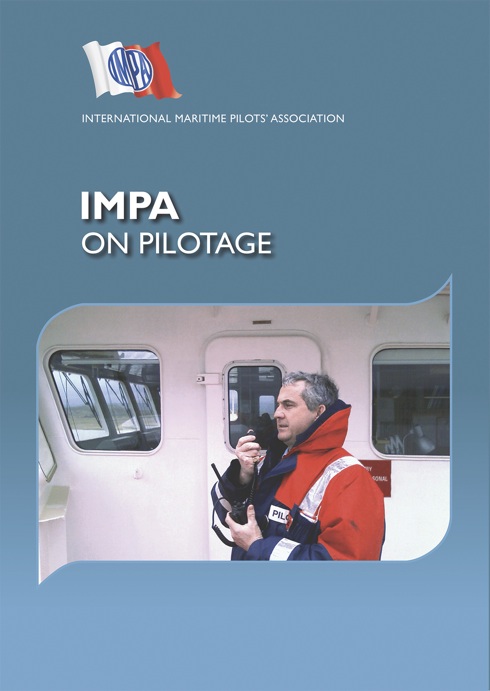 The International Maritime Pilots’ Association (IMPA: www.impahq.org) based in HQS Wellington on London’s Victoria Embankment reports that it has issued in hardback form the above title. Running to 234 pages, (ISBN: 978 1 85609 635 5) this handsome volume has a cover price of £ 75.00. The publisher is Witherby Seamanship International of Edinburgh (witherbyseamanship.com)
The International Maritime Pilots’ Association (IMPA: www.impahq.org) based in HQS Wellington on London’s Victoria Embankment reports that it has issued in hardback form the above title. Running to 234 pages, (ISBN: 978 1 85609 635 5) this handsome volume has a cover price of £ 75.00. The publisher is Witherby Seamanship International of Edinburgh (witherbyseamanship.com)
For long there have been few books on the subject of maritime pilotage and only one example comes to mind with this reviewer, that published by the Nautical Institute on pilotage and ship handling in 1990. There are references in other publications to pilotage such as in the IALA Aids to Navigation Manual.
 The ubiquitous pilot launch in service embodies excellent seaworthy characteristics. Throughout the world pilot organisations are investing in new fleets of pilot vessels and experts such as naval architects will say that pilot craft are a challenge to design and to build for the cutter has to demonstrate very high reliability in performing a safe task under severe operating conditions.
The ubiquitous pilot launch in service embodies excellent seaworthy characteristics. Throughout the world pilot organisations are investing in new fleets of pilot vessels and experts such as naval architects will say that pilot craft are a challenge to design and to build for the cutter has to demonstrate very high reliability in performing a safe task under severe operating conditions.
IMPA on Pilotage is a valuable work outlining the legal and statutory elements of pilotage, how it is conducted and methods of ship handling along with requirements, training and certification of pilots and even an introduction to fatigue management.
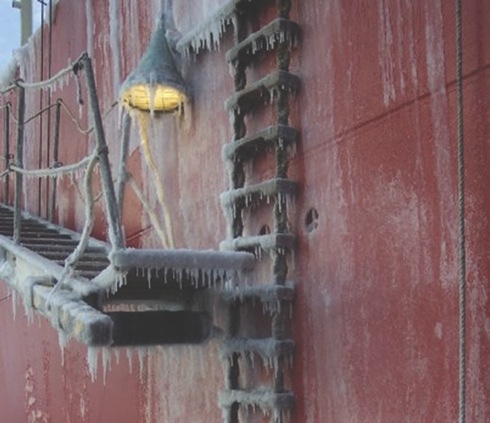 In order to carry out their duties marine pilots must embark onto and disembark from ships at sea by either the traditional method of a pilot ladder or by helicopter. In a section in this book Captain Alex Amos informs that so far there has been no development of a successful alternative method. In their time pilots will recall poor examples of the ladder provided of which the illustration here ably displays.
In order to carry out their duties marine pilots must embark onto and disembark from ships at sea by either the traditional method of a pilot ladder or by helicopter. In a section in this book Captain Alex Amos informs that so far there has been no development of a successful alternative method. In their time pilots will recall poor examples of the ladder provided of which the illustration here ably displays.
Eurocontrol news
Welcome Estonia – EUROCONTROL has reported that on 26 November 2014, the Minister of Economic Affairs and Infrastructure of Estonia, Mrs Urve Palo, signed the documents for the accession of her country to EUROCONTROL.
New studies look to potential social issues of drone use – As part of the strategy to support the development of the European market for civil drones (or Remotely Piloted Aircraft Systems – RPAS) adopted by the European Commission last April in its communication COM(2014)207, DG ENTR (Enterprise in Industry) has commissioned two studies addressing some aspects of the societal issues linked to the development of civil drones applications.
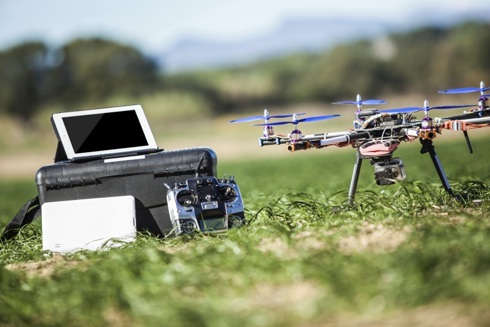 The European Commission has published two studies on social issues linked to the development of civil applications of drones. – Picture by kind permission of EUROCONTROL
The European Commission has published two studies on social issues linked to the development of civil applications of drones. – Picture by kind permission of EUROCONTROL
New transport scenarios highlight role of cities

On 4 December the International Transport Forum at OECD released projections for modal shares, and emissions at the Lima COP20 conference.
Transport in the urban centres of emerging economies is becoming a major battleground for combatting climate change. Large cities in China, India and Latin America each with over 500,000 inhabitants will more than double their share of world passenger transport emissions by 2050 to 20% (2010: 9%), if current urban transport policies remain unchanged. It is understood that 38% of the total growth in world surface transport passenger emissions to 2050 will come from big cities in these three regions in such a business-as-usual scenario.
ICAO’s 2014 Air Services Negotiation conference
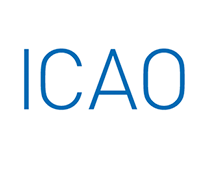 It was announced from Montreal on 25 November that the seventh ICAO Air Services Negotiation Conference (ICAN2014) wound up on a record note in Bali, Indonesia, the previous week, with 78 States/territories and one regional body taking full advantage of ICAN’s unique and cost-effective multinegotiation facility to expand air transport liberalization and market access.
It was announced from Montreal on 25 November that the seventh ICAO Air Services Negotiation Conference (ICAN2014) wound up on a record note in Bali, Indonesia, the previous week, with 78 States/territories and one regional body taking full advantage of ICAN’s unique and cost-effective multinegotiation facility to expand air transport liberalization and market access.
Some 440 negotiators conducted 550 meetings during the five-day ICAN marathon, which led to the signing and initialling of 530 air service agreements and arrangements.
 ICAO at seventy
ICAO at seventy
Eurocontrol and wind turbines
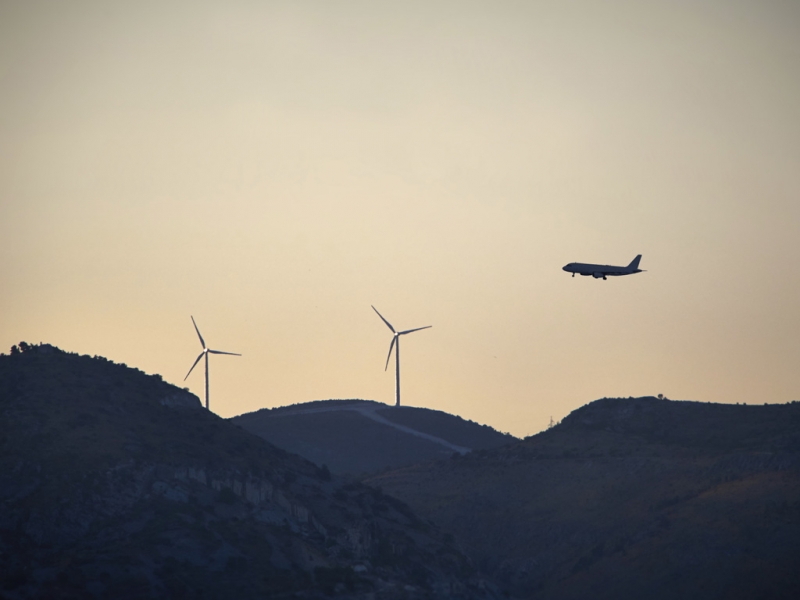 Illustration by kind permission of EUROSTAR ©
Illustration by kind permission of EUROSTAR ©
Many European states have ambitious renewable energy targets for the year 2020. In order to meet these targets, they will have to use renewable, sustainable ways of generating electricity – and wind turbines are useful devices for doing this.
However, wind turbines can potentially have a detrimental impact on the performance of surveillance systems used in air traffic control. A wind farm with many wind turbines could create false targets or lose or corrupt information on an aircraft’s position.
This is still an ongoing concern and EUROCONTROL announced on 20 November that it had recently published an update to its recommended methodology on assessing the potential impact of wind turbine structures on surveillance systems. It also gave suggestions for mitigation options.
How to Assess the Potential Impact of Wind Turbines on Surveillance Sensors
Guidelines reproduced by courtesy of EUROCONTROL.
Possible reductio of S&R resources in the
Mediterranean

Seafarers’ Rights International (SRI) has raised concerns about the implications for masters of the recent reports of the launch of the new EU Frontex operation ‘Triton’ which will apparently have a reduced budget and focus on border control in place of the Italian ‘Mare Nostrum’ that is credited with saving more than 150,000 migrants in the Mediterranean.
Brian Orrell OBE, Chairman of the Advisory Board of SRI commented: “The obligation of masters to assist persons in distress at sea is steeped in maritime tradition and legal history. It is therefore of concern if budgets for search and rescue in the Mediterranean are being reduced. This may increase the number of search and rescue missions that masters have to undertake, as well as their risks of criminal prosecution for any perceived failure to attend to persons endangered at sea.”
IMO adopts mandatory code
for ships operating
in polar waters
The International Maritime Organization (IMO) has adopted the International Code for Ships Operating in Polar Waters (Polar Code), and related amendments to the International Convention for the Safety of Life at Sea (SOLAS) to make it mandatory, marking an historic milestone in the Organization’s work to protect ships and people aboard them, both seafarers and passengers, in the harsh environment of the waters surrounding the two poles.
The Polar Code and SOLAS amendments were adopted during the 94th session of IMO’s Maritime Safety Committee (MSC), which was meeting at the Organization’s London headquarters from 17 to 21 November 2014.
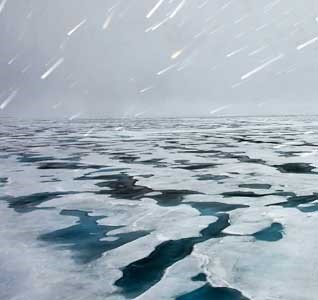 The Polar Code covers the full range of design, construction, equipment, operational, training, search and rescue and environmental protection matters relevant to ships operating in polar waters – © Mark Garten / UN Photo
The Polar Code covers the full range of design, construction, equipment, operational, training, search and rescue and environmental protection matters relevant to ships operating in polar waters – © Mark Garten / UN Photo
China’s most advanced deep-water semi-submersible drilling rig in DNV GL class
It was announced from Shanghai on 21 November that COSLProspector, the fourth deep-water semi-submersible drilling rig built by CIMC Raffles for China Oilfield Services Limited (COSL), had been delivered in Yantai, Shandong Province. It represents another milestone for China’s deep-water drilling rig going into the global mainstream market.
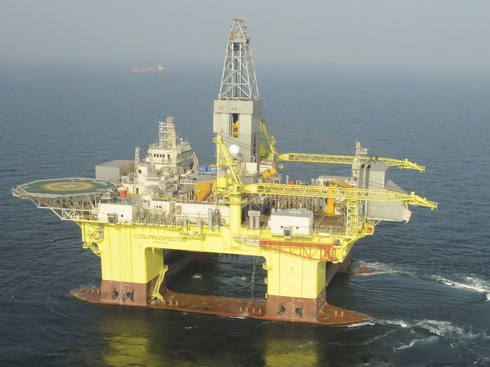 COSLProspector fulfils ice-class, environment-friendly and low-temperature
COSLProspector fulfils ice-class, environment-friendly and low-temperature
requirements
International e-Navigation Underway 2015
Readers may wish to be aware of this event to be held in MV Pearl Seaways steaming Copenhagen-Oslo-Copenhagen, 27-29 January, 2015
Registration is now open and further details can be found at www.e-navigation.net
 The programma of this three day event can be found here.
The programma of this three day event can be found here.
ENC 2015 call for abstracts
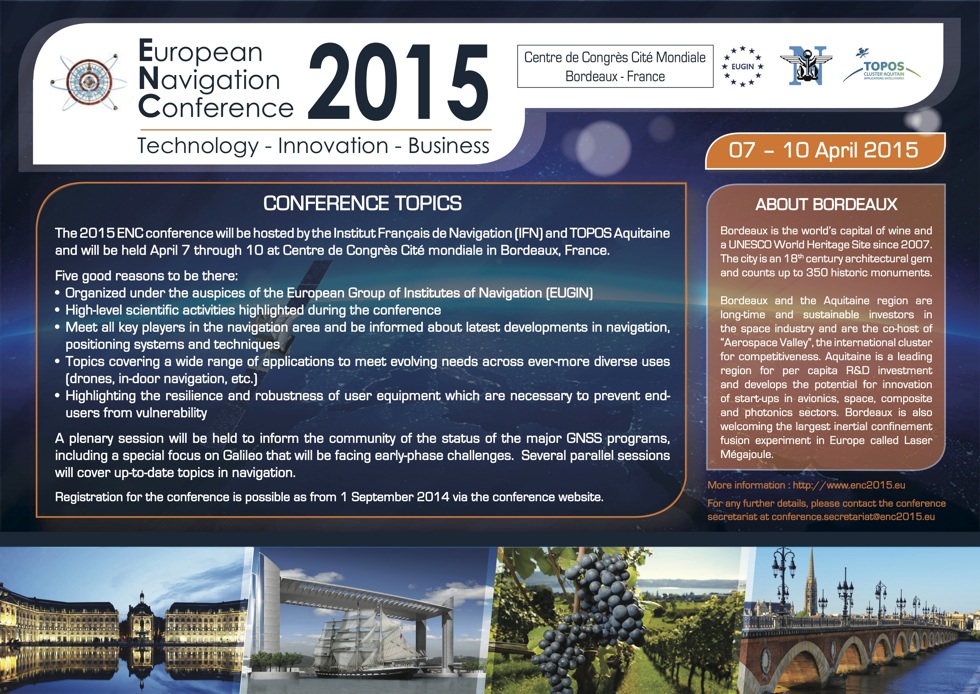
The European Navigation Conference is an annual event organized under the auspices of the European Group of Institutes of Navigation (EUGIN). Gathering 150 members of the scientific community and more than 300 guests overall, the ENC is a unique opportunity to meet all the key players in the navigation area. It is renowned for its high-level scientific activities highlighted during the conference and the wide range of topics covered.
Call for abstracts submission by December 31st, 2014.
NTSB update on crash of
Virgin Galactic SpaceShipTwo
 On 12 November the (US) National Transportation Safety Board (NTSB) issued an investigative update into the crash of SpaceShipTwo on 31 October in Mojave, California.
On 12 November the (US) National Transportation Safety Board (NTSB) issued an investigative update into the crash of SpaceShipTwo on 31 October in Mojave, California.
The investigation is ongoing and any future updates will be issued as events warrant.
Tideland introduces new offshore helideck platform lighting
In mid-November Tideland Signal Corporation, (Tideland) launched its new PTPS (primary touchdown positioning system) that is designed to provide greater visibility to pilots landing on offshore helideck platforms at night or in reduced visibility by illuminating the landing circle and the “H” (the C&H).
PTPS is designed and engineered to fully comply with the UK CAA CAP 437 standards for offshore helicopter landing areas and also is suitable for Zone 1, Zone 2 hazardous areas.
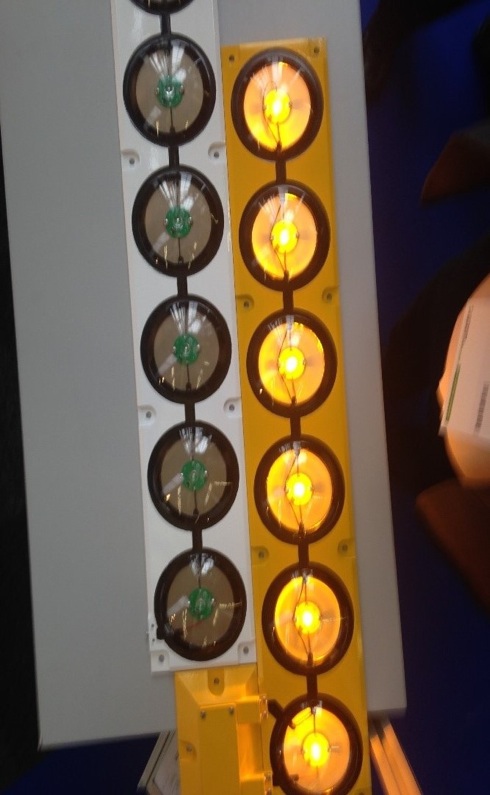 C & H lights in action at Offshore Energy Amsterdam, 2014
C & H lights in action at Offshore Energy Amsterdam, 2014
ATSB – Aviation safety trends
The first report by the Australian Transport Safety Bureau (ATSB) of safety trends in Australian aviation reveals that while the nation’s skies remain safe, there are some shifting trends to watch.
Of note in this reporting period was an increase in the rate of airborne collision alert system warnings in high-capacity air transport operations over the past five quarters (since April-June 2013).
Loss of separation incidents involving low capacity air transport also increase in January to June.
ACCSEAS
final conference 2015
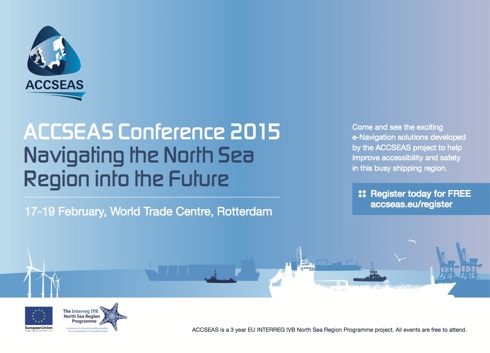
ACCSEAS is a three year project under the North Sea Region Interreg IVB Programme.
‘Navigating the North Sea Region into the Future’ is announced as the theme of the final ACCSEAS Conference to be held in Rotterdam on 17-19 February, 2015.
The Final ACCSEAS Conference will present and demonstrate the e-Navigation test-bed solutions developed by ACCSEAS to improve accessibility and to help mariners take safe and effective decisions when navigating the North Sea Region.
It aims to build upon the success of the second ACCSEAS Annual Conference held in Edinburgh, earlier this year and will bring together a global audience to explore the implementation of the ACCSEAS e-Navigation test-bed services and present the concluding results of this engaging North Sea Region project.
UK eLoran now in operation
to backup vulnerable GPS
 Diagram illustrating shipping traffic in NW European waters. The busiest areas are coloured red. The digits indicate the number of movements recorded in 2012.
Diagram illustrating shipping traffic in NW European waters. The busiest areas are coloured red. The digits indicate the number of movements recorded in 2012.
- Seven land-based monitoring stations to help ships navigate with signals one million times more powerful than GPS;
- eLoran technology will protect world’s busiest sea lanes from powerful illegal GPS jammers, space weather interference and other causes of GPS loss;
- Technology could backup critical national infrastructure, such as the Grid and City of London in the case of major GPS outage.
Technology to counter the threat of GPS jamming is now available at Dover and along the East coast of the UK, as the nation continues to set a benchmark across the globe.
The General Lighthouse Authorities (GLAs) of the UK and Ireland announced at the end of October the Initial Operational Capability of UK maritime eLoran.
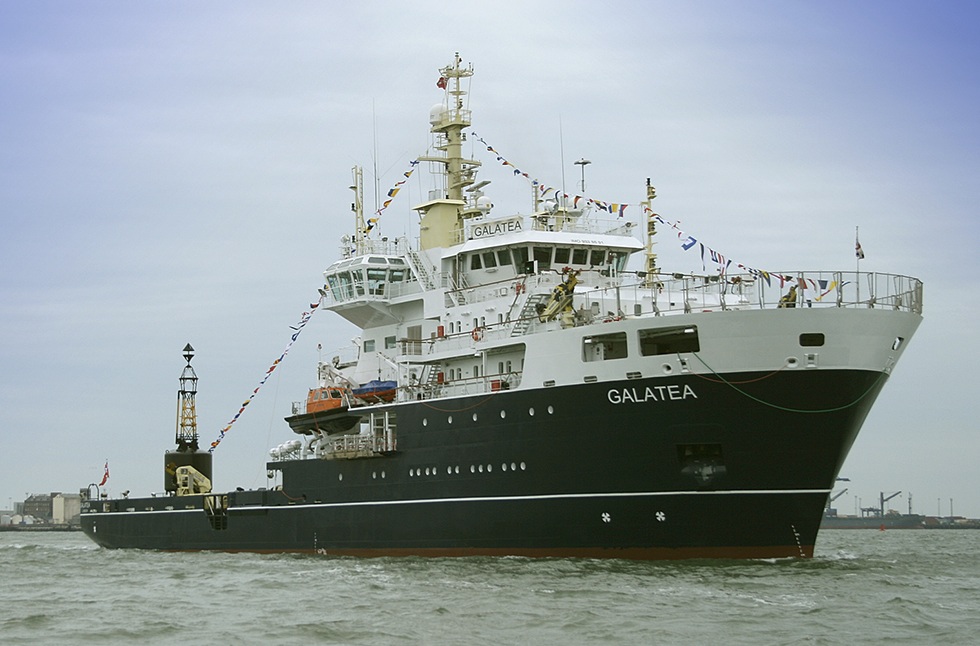 The Trinity House vessel Galatea used on the eLoran trials and equipped for eLoran evaluation.
The Trinity House vessel Galatea used on the eLoran trials and equipped for eLoran evaluation.
Navigation aids renewal in Colombia’s San Andrés and Providencia islands
DIMAR (Colombia’s National Maritime Authority) continues to invest in the safety of its waterways and ports.
The most recent project completed, it was announced on 30 October, was the renewal of the aids to navigation in the access channels to the ports of San Andrés and Providencia located in Colombia’s Caribbean waters. According to local sources: “This is an investment that impacts decisively on the maritime future and economic development of Colombia’s Caribbean islands.”
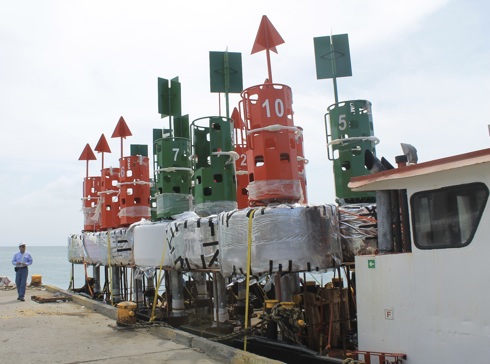
Works have been carried out by Almarin, a specialist in the manufacture and installation of floating aids to navigation. The scope of the project included the supply, delivery and deployment of more than thirty buoys: twenty lateral marks, one safe water mark and one isolated danger mark in the access channel to the port in San Andrés island, and also eight lateral buoys and one safe water mark in the access channel to the port on Providencia island.
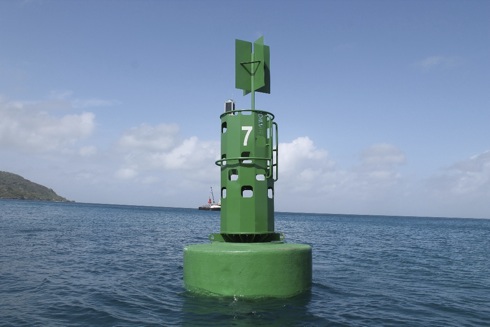
Terma radar for
Charles de Gaulle

It was announced from Terma’s HQ in Aarhus, Denmark and simultaneous at Euronaval 2014 taking place at Le Bourget, France, on 27 October that Terma has been contracted by French warship builder DCNS to supply two SCANTER radars of the type 6000 for the French Navy’s aircraft carrier Charles de Gaulle (R91), the largest Western European warship, which was commissioned in 2001.
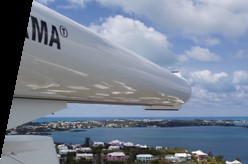
The main task of the SCANTER radars as part of total radar suite aboard the carrier is to serve as a multi-role sensor system to meet requirements for navigation and tactical surface and air surveillance, search & rescue, and helicopter control.
TransNav 2015
According to Professor Adam Weintrit, Chairman of the TransNav Conference and Doctor Tomasz Neumann, Secretary of the Organizing Committee there is now an extension of the paper or abstract submission to 8 November for TRANSNAV 2015.
Further details are provided on the website at transnav2015.am.gdynia.pl.
The 11th International Conference on Marine Navigation and Safety of Sea Transportation, TransNav 2015, is being organised jointly by the Faculty of Navigation, Gdynia Maritime University and the Nautical Institute and will be held from 17 to 19 June 2015 in Gdynia, Poland.
10th Anniversary for ICAO IDENT support
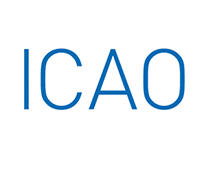 Earlier this month ICAO announced from Montreal that the 10th Machinereadable Travel Document (MRTD) Symposium got underway at its ICAO HQ with over 500 participants from every region of the world reaffirming ICAO’s leadership in strengthening the security and efficiency of air transportation.
Earlier this month ICAO announced from Montreal that the 10th Machinereadable Travel Document (MRTD) Symposium got underway at its ICAO HQ with over 500 participants from every region of the world reaffirming ICAO’s leadership in strengthening the security and efficiency of air transportation.
Having met its 2010 deadline for the introduction of machine-readable passports on a comprehensive global basis, and responding to calls from States on the need to expand the scope of its guidance and assistance to ensure a more robust and secure global travel document regime, ICAO recently began to evolve its MRTD programme to assist States in the establishment of holistic traveller identification management systems.
ICAO and UN climate summit
 At the end of September the aviation sector joined other business and government groups at the United Nations Climate Summit to announce a commitment on climate action between the ICAO and the aviation industry represented by the Air Transport Action Group (ATAG). This partnership expands on work already being undertaken across the air transport sector to reduce emissions from this important global industry.
At the end of September the aviation sector joined other business and government groups at the United Nations Climate Summit to announce a commitment on climate action between the ICAO and the aviation industry represented by the Air Transport Action Group (ATAG). This partnership expands on work already being undertaken across the air transport sector to reduce emissions from this important global industry.
The agreement was co-signed by Airports Council International, Civil Air Navigation Services Organisation, International Air Transport Association, International Coordinating Council of Aerospace Industries Associations and International Business Aviation Council – representing the various components of the international air transport industry.
Concorde droops its nose at a special celebratory event
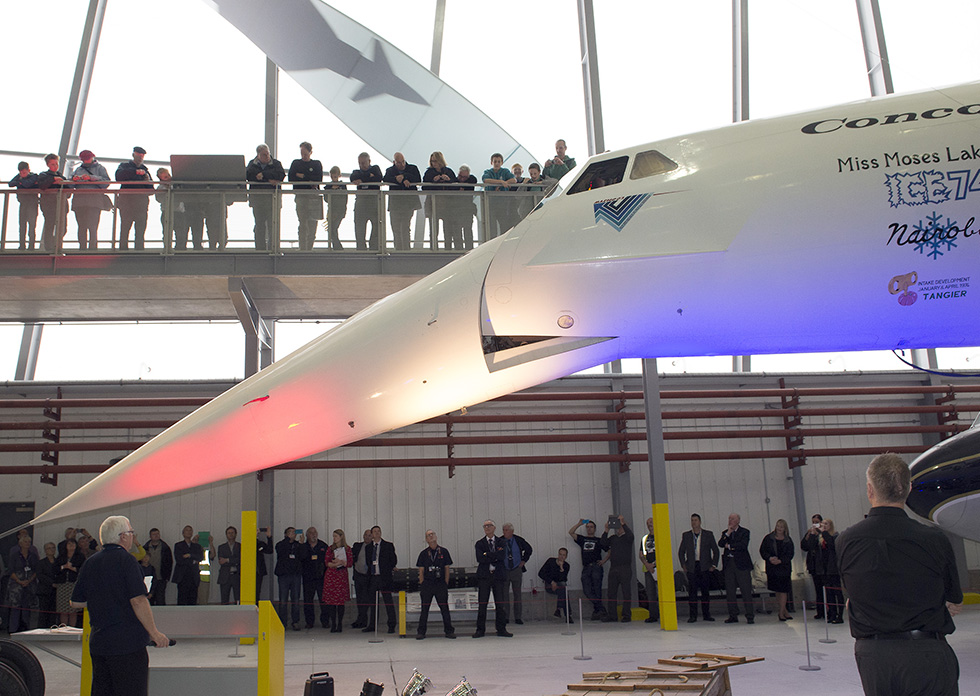 Concorde’s droop nose mechanism is demonstrated to an appreciative audience at Imperial War Museum, Duxford on 24 October 2014. – Photo © IWM
Concorde’s droop nose mechanism is demonstrated to an appreciative audience at Imperial War Museum, Duxford on 24 October 2014. – Photo © IWM
On 24 October, Duxford Aviation Society (Cambridgeshire, eastern England) revealed newly-restored features on its Concorde, to an audience of invited guests, at the Imperial War Museum, Duxford on the eleventh anniversary of the last commercial Concorde flight.
Following eighteen months of painstaking restoration work, this Concorde now features fully-functional cockpit lighting and the operation of the aircraft’s famous droop nose. This is the only Concorde in the UK with the ability to operate the nose mechanism.
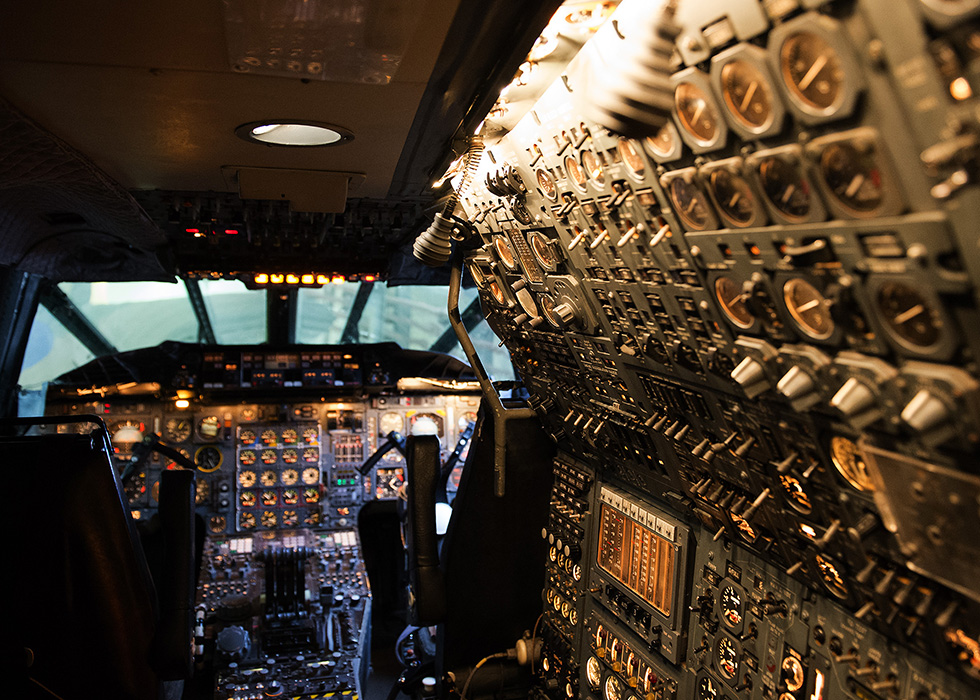 Duxford’s Concorde’s newly restored cockpit lighting. – Photo © IWM
Duxford’s Concorde’s newly restored cockpit lighting. – Photo © IWM
European GNSS Agency and Eurocontrol announce cooperation agreement
 Mr Frank Brenner, Director General of Eurocontrol and Mr Carlo des Dorides, Executive Director of the European GNSS Agency (GSA) sign a new cooperation agreement. – Photo © Eurocontrol
Mr Frank Brenner, Director General of Eurocontrol and Mr Carlo des Dorides, Executive Director of the European GNSS Agency (GSA) sign a new cooperation agreement. – Photo © Eurocontrol
In the presence of the European Commission, the European GNSS Agency (GSA) and EUROCONTROL signed a new cooperation agreement towards the end of September. The objective of the agreement is to jointly contribute to the implementation of European Union GNSS policies as they apply to the field of aviation.
As Europe’s skies and major airports become increasingly congested, there is need for Air Traffic Management (ATM) technologies to evolve from groundbased infrastructures to more advanced systems based on new technologies. EUROCONTROL and the GSA have a shared objective in developing and exploiting European GNSS technology to improve accessibility, efficiency and safety to European operators, pilots and airports.
Galileo navigation satellites delivered
On 16 October the European Space Agency (ESA) reported that a pair of fully functioning Galileo navigation satellites had recently been delivered to its operators, as preparations got underway for the next round of launches.
On 27-28 September, the two satellites launched on 22 August were handed over from ESA’s Space Operations Centre, (ESOC), in Darmstadt, Germany, to the Galileo Control Centre at Oberpfaffenhofen, also in Germany. Here they will be cared for pending a final decision on their use.
It is understood the satellites are in excellent health and working normally.
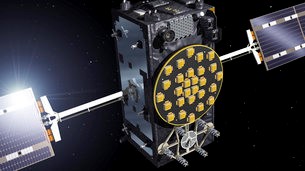 Galileo satellite – © ESA
Galileo satellite – © ESA
Plans for new visitor centre Portland Bill
 Portland Bill – © Kevin Borg
Portland Bill – © Kevin Borg
Trinity House has agreed a lease with The Crown Estate for the former lighthouse keepers’ cottages at Portland Bill Lighthouse in Dorset on the south coast of England. The premises will be rejuvenated to house a new visitor experience themed around the maritime history of Trinity House and its responsibilities providing aids to navigation, charitable support and educational services to the mariner since 1514.
Portland Bill Lighthouse has been popular with visitors for many years but their experience to date has been limited to ascending the lighthouse; the new centre will engage visitors in the history, workings and importance of aids to navigation such as lighthouses and fog signals and the people who made it all work. The displays will demonstrate the nature of modern aids to navigation and demonstrate why as an island nation – dependent on the sea for trade – they remain of critical importance to the safety of the mariner and to a growing maritime leisure community.
